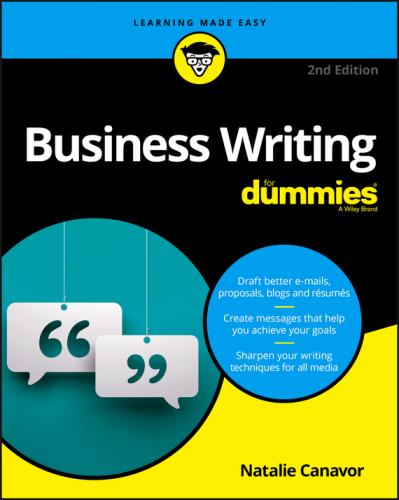Jane values: Collaborative teaming; people skills; department reputation; effective presentation. She is weak in systems planning and insecure with new technology.
This bit of brainstorming helps Jake produce a blueprint for persuasive content. His email can briefly cite his proven track record in terms of the job requirements, his ability to deliver results as a team leader, his awareness that success will enhance the department’s reputation, and that he’ll use his excellent presentation skills to ensure this result.
The weaknesses he pinpoints for Jane give Jake another avenue for presenting himself as the best choice. He can suggest a planning system he’ll use to make the most of staff resources and/or a specific way to incorporate new easy-to-use technology. These aspects of his message are likely to catch Jane’s attention.
Even if Jake doesn’t get the assignment, writing a good email contributes to his longer-range goals of presenting himself as ready, willing, and able to take on new challenges and to be seen as more valuable.
When you use this structured thinking to plan your messages, whether they’re email messages or proposals or anything in between, you move far toward the real heart of good writing – real and relevant substance. Writing is not a system for manipulating words, and don’t ever expect it to camouflage a lack of thought, knowledge, or understanding. Good writing is good thinking presented clearly, concisely, and transparently in ways that make sense to your readers.
I make you a rash promise: For every fraction you improve your writing, you’ll improve your thinking along with it. Plus, you will improve your ability to understand other people, which will help you build better relationships and achieve what you want more often.
The other essential groundwork for successful writing is how to say what you want. Chapters 3, 4, and 5 demonstrate common-sense techniques that professionals use to spot problems and fix them with the least effort.
Try This: To quickly upgrade anything you write, use the say-it-aloud diagnosis. When you read your own copy aloud (or whisper it to yourself if you’re not alone), you get immediate signals that something isn’t working or can work better. You may be forcing your sentences into a sing-song cadence that denotes awkward construction, unnecessary words, and overly long sentences. You may hear repetitive sounds or inappropriate pauses created by poor punctuation. You can easily fix all these problems, and many more, once you identify them this way. Many professional writers use this approach. It works beautifully for business writing, because when well done, your writing sounds conversational.
Chapters 3 through 5 give you a host of down-to-earth strategies for monitoring your own work and improving it. These include computer resources like Microsoft Word’s easy-to-use Readability Index, which provides helpful clues for making your writing clear.
No matter where you now see yourself on the writing spectrum, I guarantee there’s room for improvement. Most journalists, corporate communicators, bloggers, and public relations specialists are obsessive about discovering better ways to write and build their skills. They want to create material that’s ever more interesting, persuasive, informative, and engaging.
You also find yourself actively building relationships that benefit you over the long run. If a negative relationship hampers you at work, the structured thinking I show you in Chapter 2 even provides a tool for turning that relationship around.
WHY LEARNING TO WRITE BETTER MAKES SENSE
If good writing is a skill that can be developed – and based on teaching hundreds of adults, I know it can – you may wonder why you don’t currently write as well as you’d like. You already learned to write in school, correct?
Actually, few people did. Unless you were lucky and ran across an unusual teacher, the people who taught you to write never worked on practical writing themselves. Unlike the business world, the academic system is not geared to getting things done, but rather to thinking about them. Writing for school mostly aims to demonstrate your understanding of what you learned, or contribute to the store of human knowledge. Academia traditionally rewards dense, complicated, convoluted writing full of expensive words. This is changing, but not very fast.
Business writing, on the other hand, invariably has a goal and is geared toward action. And whatever the goal, it is always best accomplished by being accessible, direct, clear, concrete, and simple. What you write should be conversational as well as engaging and persuasive.
Imitating nineteenth-century writing traditions in your work makes little sense, and striving to produce empty, cliché-ridden twenty-first-century blog posts is just a recipe for boring your readers. However, even though no one wants to read such messages, they surround us. (Why this is true remains a mystery to me.) Therefore, learning to write well gives you a major competitive advantage, and helps set you apart from the crowd.
Applying the Goal-Plus-Audience Strategy to All Business Needs
You may have felt challenged at times to write differently for so many forms of communication, or may even have avoided using new or unfamiliar media. Here’s the best encouragement I can give you to experiment and venture forth: The strategizing process is the same for all media, present and future. Planning a brief effective email is very much the same as planning a proposal or blog post, presentation, or resume. The Goal + Audience = Content structure will never fail you, no matter how hard the writing challenge seems.
For this reason, I begin with “small” messages like email. Once you absorb the thinking process for this everyday workhorse, you’re well prepared to tackle more formal business documents and strategize your digital presence and face-to-face communication.
